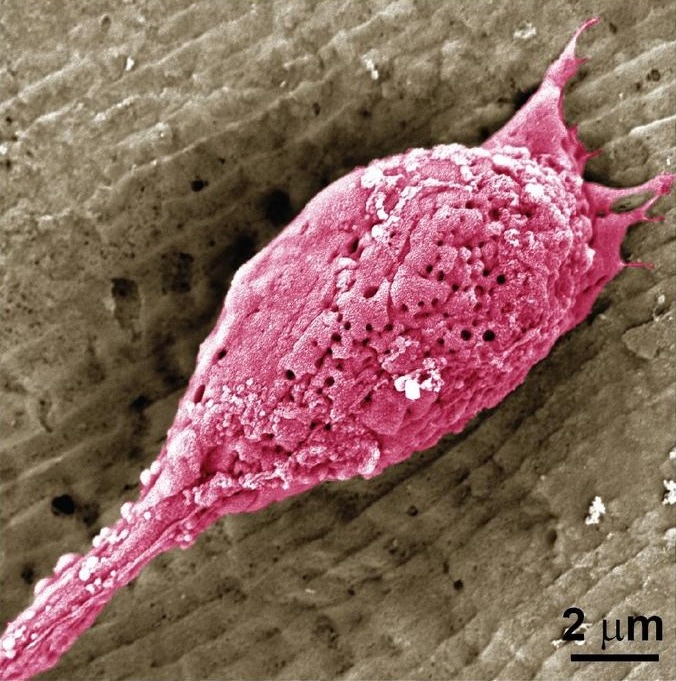Reviewed by Danielle Ellis, B.Sc.Jan 30 2024
Cultivated meat, or lab-grown meat, which is made of animal muscle and fat cells grown in a lab, has become a viable option as the world's population grows.
 By putting ridges in a plant protein base, cultured muscle cells grew in a pattern that mimics the alignment of muscle fibers in animals. Image Credit: Adapted From ACS Biomaterials Science & Engineering, 2024.
By putting ridges in a plant protein base, cultured muscle cells grew in a pattern that mimics the alignment of muscle fibers in animals. Image Credit: Adapted From ACS Biomaterials Science & Engineering, 2024.
Additionally, these cell cultures could be grown using affordable, eatable plant proteins. According to a recent study published in ACS Biomaterials Science & Engineering, the non-allergenic wheat protein glutenin has the ability to grow both flat fat layers and striated muscle layers, which together can create textures resembling meat.
To create lab-grown meat, cultured cells require a base or scaffold to adhere to. Because plant proteins are cheap, plentiful, and palatable, they make attractive scaffold candidates. Past studies demonstrated that a plant-based glutenin film worked well as a culture medium for cow skeletal muscle cells.
However, to create a meat-like substitute that is promising, the muscle cells must align to form fibers that resemble the texture of real tissues. To mimic the composition of conventional meat products, fat must also be incorporated into the three-dimensional structure.
Ya Yao, John Yuen, Jr., Chunmei Li, David Kaplan, and colleagues wanted to create plant-based films using glutenin - a protein in gluten that people with celiac disease or gluten sensitivity typically do not react to -to grow textured muscle cells and fatty layers.
The scientists separated the glutenin from the wheat gluten and created ridge-patterned, flat films. Subsequently, they seeded the protein bases with skeletal muscle-developing mouse cells and incubated the films with the cell layer for a period of two weeks. On films that were ridged or smooth, cells multiplied and grew.
As anticipated, the performance of the glutenin-based films was less than that of cells grown on gelatin-based control films but still adequate. More work, according to the researchers, is required to enhance the way in which cells adhere to the plant-based film to get closer to the growth of the biomaterial derived from animals. The cells on the patterned film recreated the fiber structure of animal muscles by forming long, parallel bundles during the second week of the culture.
In a different experiment, flat glutenin films were coated with mouse cells that generate adipose tissues. Visible lipid and collagen deposits were produced by the proliferating and differentiating cells during the incubation period.
A 3D meat-like alternative protein could be created by stacking the layers of cultured meat and fat that are connected to the edible glutenin films. The researchers suggest using the glutenin material base as a basis for a more realistic-looking method of producing cultivated meat products because it promotes the growth of both textured animal muscle and fat layers.
Source:
Journal reference:
Yao, Y., et al. (2024) Cultivated Meat from Aligned Muscle Layers and Adipose Layers Formed from Glutenin Films. ACS Biomaterials Science & Engineering. doi.org/10.1021/acsbiomaterials.3c01500